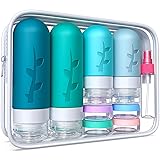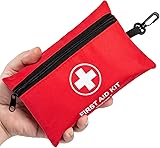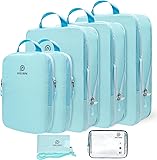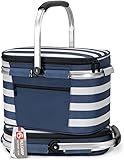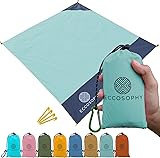Snuggle Up to the California Coast in Winter
As an Amazon Associate, I may earn a small commission from qualifying purchases.
My husband and I have always felt a bit out of step with the typical. We married relatively late, had kids relatively late, possibly even peaked rather late. But the great thing is we’re in-step with each other. So a couples trip to the California Coast – in winter – wasn’t really a stretch.
I suggested a last-minute trip to the California Coast. We hadn’t really explored the coast between San Francisco and Santa Barbara. So, after the kids left post-Thanksgiving, we made quick plans for an early December trip.
We picked a destination of Cambria, California, for no other reason than we knew nothing about the sleepy town. And although we ended up reaching points a bit further south, San Luis Obispo, our base was Cambria, on Moonstone Beach.
I love impromptu trips; overthinking and over planning takes something away from the spontaneity of all for me. Best of all? Our favorite parts of the trip were things we never could have planned, anyway.
Our only plan was no real plan
Our plans didn’t include swimming or soaking up the sun. Living in Minnesota, we wanted to experience California in the “cold.” We wanted to experience the coastal towns as locals, when other tourists weren’t around, when we could have the place to ourselves.

Day 1
We boarded an early flight to San Francisco, rented a car and headed to the Coast. We had a hotel booked a few hours south. But our plan was to start in Monterey and kick around there until we were ready to move on and then head to nearby Carmel-by-the-Sea, figuring that’s about as far as we’d get on Day 1.
Our goal wasn’t to see every sight. Our goal was to sink into the California vibe and freewheel it as much as two native midwesterners could. We did pretty well, by the way.
As we headed South on US-101, we began seeing signs for San Jose. Thanks to Spotify, we cued up Dionne Warwick’s “Do You Know the Way to San Jose” to set the vibe, as we careened down the not-too-busy highway.
Monterey
We were only a few blocks deep into downtown Monterey when a low building stretching the whole block, called to us. We turned onto Figueroa St., and still couldn’t really tell what it was. So we did what any freewheeling couple would do. We parked and headed over.
Turns out we’d stumbled on a cool taproom called Dust Bowl Brewing Company, that had set-up shop in an old train station. It was California sunny when we walked into the place, so we kept on walking to the picnic tables and chairs outside. The fire pit chairs were taken so we took a wooden bench off to the side. It didn’t seem that it could get any better than this. Cool place, cool drinks. The sun on our faces.
Here’s a bit of Dust Bowl Brewing Co’s story:
The company opened a satellite taproom in Monterey, California known at the Tap Depot. Situated next to the world-famous Fisherman’s Wharf, the stand-alone building was originally built in 1874 as a train depot. The décor plays into the rich Monterey references of acclaimed author, John Steinbeck, which ties back to the Dust Bowl Brewing brand story. The Tap Depot offers 24 taps, indoor seating and an outdoor patio with a communal fire pit, heaters, corn hole and easy access to the resident food truck, Wedo’s Tacos.
We probably could have sat there until we lost the sun but we were eager to explore a bit more of Monterey before heading slightly south to Carmel.
Carmel-by-the-Sea
Monterey and Carmel are much closer together than we expected and we pulled into Carmel and immediately knew why it was always referred to as “charming.” It felt like a village anchored somewhere in the past, with canopied trees overhanging the narrow residential streets. And it was surprisingly hilly.
We explored a bit by car, using the shoreline as our guide. Suddenly the street we were on opened up to a clear view of the Pacific and a variegated color sky that led directly down to Carmel Beach. Some cars were parked and we could see people camped out on the beach, awaiting sunset. We hadn’t known it was renowned for its sunsets, but we were about to find out.
The next hour was one of the most memorable of the trip. We descended the sandy hill down to the beach and joined others who seemed as though they might do this often. Sure, there were probably some other tourists, but we didn’t notice. To us, everyone looked as though they were at peace in one of their favorite pre-sunset spots. No words describe the sky around the setting sun.

Dinner bell
It was chilly on the beach, especially as the sun disappeared beneath the horizon. We climbed back up the sandy hill to our car. We spoke to a local resident who recommended PortaBella restaurant, just off Ocean Avenue. As seemed to happen to us numerous times on this short trip, when we sought, we found.
PortaBella was pretty busy and my hopes were nearly dashed when we walked in, looked around and realized we should have made a reservation. But the maitre ‘d smiled, and took us a cozy table, saying it was the last he’d have open that evening. We had no idea whether or not this was true but we chose to believe it was meant to be.
We feasted on lamb chops, a pork ragu, and a salad of the kind I think you can only find in a location so close to where the ingredients are grown. (More on this in Day 2.) We will be back.
No bridge, so back inland and then south
We’d hoped to travel down Highway 1 to our destination, Cambria. But we’d learned before leaving that the re-opening of the Rocky Creek Bridge has been delayed. A landslide had taken it out months earlier, so this meant we needed to head inland and head east on Highway 68 toward Salinas. There, we picked up 101 south, to Highway 46 west into Cambria.
By the time we hit Salinas, it was dark, really dark. We sensed we were missing sights because valleys quickly became mountainous but we knew we’d be doubling back tomorrow. It had been an amazing day, but a long one, having begun the day in Minneapolis.

Moonstone Beach
Again, due to the darkness, reaching Cambria didn’t feel like a lot that first night. But we checked into the moderately priced Fireside Inn, just across from Moonstone Beach. We’d been told that although our hotel didn’t have dining, breakfast delivery was available.
Well, not in December. So, that first morning, we got back into the car, got coffee on the road and headed back up to Carmel, to take our time on Highway 1 south to Big Sur. Moonstone Beach in Cambria, was calling to us, but Big Sur called louder, and we headed north.
Here are some things I never travel without!
No products found.
Day 2
It did feel like a lot of driving, retracing the same roads from the night before. But there was a lot to see and now it was light enough to take it in. We were amazed at how quickly the topography changed from flat-to-hilly Cambria, to hilly-to-mountainous Paso Robles.
Paso Robles and the other California wine country
Everyone knows Napa, but the Paso Robles Wine Country, located between San Francisco and Los Angeles, is actually the fastest growing wine region with the largest geographic spread. The region is known to have a greater day-to-night temperature swing, more diverse soils, and a longer growing season than other California regions. Some say this provides Paso Robles with optimal grape-growing conditions.
There are more than 40,000 vineyard acres and more than 200 wineries in Paso Robles. We didn’t see anywhere near that many as we headed north but we saw enough to know we’d come back and visit a few wineries, as we’d done in Napa, and outside Santa Barbara, on earlier trips.
Onward, north to Salinas
Salinas was endlessly fascinating to drive through. Although I’d heard it was called the “Salad Bowl of the World,” the endless fields, soil, and irrigation systems were actually awe-inspiring. (The previous night’s salad tasted as though they’d cut the vegetables from this valley just before serving.)
This region is known for its fertile soil and large-scale farming operations. It’s also a growing hub for “agtech” or agricultural technology. Not surprising given the truly awe-inspiring farming operations at hand.
There wasn’t a family-sized farm in sight, but rather vast expanses of fields that grew everything from lettuce and strawberries, to grapes for wine.
Anyone who’s read John Steinbeck will immediately recognize the settings for The Grapes of Wrath and East of Eden. Steinbeck’s descriptions of the valley are amazing but it is even more awe-inspiring to see in person. I think it’s the vast expanse.
We continued back up and over to Carmel, and found ourselves glad to be retracing our steps. We had missed all of this as we drove south in the darkness.
Big Sur bound
Once we were back in Carmel, we picked up Hwy 1 south again, headed for Big Sur. It was only a 12-mile stretch of road before we would come to the washed-out Rocky Creek Bridge. But we’d read this drive could easily take hours, due to traffic and the sheer need to pull over every turn to take in the ravishing beauty of the caost.
The sharp turns and sudden stops along this stretch have not been over-reported. We had little traffic, but enough, as well as bicyclists and so many scenic turn-offs, you had to watch your step. Nothing about this stretch disappointed. The views really aren’t describable. They are everything, and more, what you’ve heard.

Rugged beauty, timeless seascapes
We stopped at four or five turn-offs to get out, take in the view and walk down a bit closer to the surf. We climbed a couple but were dissuaded from a few more as they looked a bit treacherous. The beauty is indescribable; it is a rugged beauty we haven’t seen anywhere else in the U.S.
The other interesting thing about this drive is that at one point we found ourselves in a deep forest. The sunlight gone, canopied trees so thick it looked hours later than it was took the light away. Again, the rapidly changing topography along these drives were some of the most interesting things we experienced on this trip.
If we take this drive again, we plan to bring a picnic and park and climb down as close we can to the sea and make a day of it.
Back on the road, heading south again
Repetitive as the drive may have been from the day before, we saw so much worth seeing in the light of day and impending dusk, we didn’t really mind.
Our plan was to have dinner in Paso Robles, before heading back to Cambria. To anyone who’s done this drive, you’ll know exactly what I’m talking about, next.
As we reached the outskirts of Paso Robes, there was a huge castle-like structure off the highway, a parking lot full of cars, and what looked to be waterfalls and horses. And everything was pink. Yes, pink.
We made a U-turn and got back going north again, so we could exit and check out what we soon learned was the Madonna Inn. This place is pretty indescribable, except to say it the pinkest experience we have ever had. The building is pink, everything inside is pink, and it is over-the-top kitschy. Oh, and did I mention it was teeming with pre-teen and teenage girls, all dressed in pink.
Built in 1958, there’s a hotel and a couple of restaurants and grounds. Apparently, each room is unique, but each is full-on pink. We were told many people book two nights so they can stay in a different room each night.

With age comes wisdom
It was clearly a very popular spot, just judging by the parking lot filled with hundreds of cars. We joined these cars and ventured inside. We walked through one of the bar areas and then went up to see about dinner. It was apparently more than an hour’s wait, which wasn’t surprising.
My husband is usually beyond-a-good-sport. He’s willing to try almost anything, but as I looked at him and he looked at me, I said, “Do you want to stay?”
He didn’t say anything for a moment, then said, “Do you?”
“Lets get out of here,” I said, and he beamed. Correct answer.
Being on the same page is worth a million bucks
I do not want to disparage Madonna Inn. But one of the perks of the Middle+ Years is that we know our minds. We tried lots of things, we’ve sat through bad dinners, acting like they were fine. We’ve gone to restaurants we knew, instantly, weren’t our cup of tea. But we stayed. We endured.
Not this time. This time, we hit the highway, heading south again, toward Cambria. feeling like we’d escaped with our lives.
We ended up getting off in the downtown area of Paso Robles and had dinner at what looked to also be a popular spot, even though it wasn’t pink.
The perks of not being 25
It turned out to be less-than-amazing from a culinary standpoint, but we knew we were leagues happier than if we’d stayed and dined among the pink.
This is one of the many things that really are rich about not being 25 anymore, and having a history together. Back then, we probably would have dined at the pink place and we would have regretted it. It might have made for a funny memory as time went on, but still a wasted evening, for us.
Over our perfectly acceptable dinner at a restaurant more us, in Paso Robles, we glanced at each other a couple of times. We exchanged the “I’m so grateful we’re on the same page” smile, that can only be earned by spending decades with someone.
Day 3
This was our last full day, given we had a flight out of San Francisco early afternoon the following day. So, fairly uncharacteristically, we rose early to get a start on the day.
San Luis Obispo bound
We again got coffee in downtown Cambria, electing to hit the coffee shop this time, instead of the diner. It was a good choice. Our destination this day was San Luis Obispo, sometimes cited as the “Happiest place in the U.S,” due to its slower pace of life and strong sense of community.
Cambria itself has a pretty slow pace. It’s a sweet town, with friendly people, and stunning beaches. It does have a feeling of being arrested in time. While there, we learned that 40 years ago, the town had been slated as a primo beach destination between Big Sur and Santa Barbara.
But the town suffers from a water shortage that’s thwarted its growth plans. And, apparently there’s been zero progress on the water issue. Consequently, there’s been zero growth in the town of Cambria. It feels a bit like an outpost, the town that almost was. But it does have a charm all its own.
San Luis Obispo
Driving the streets of SLO did make you feel like it was a happy place. The streets were pleasantly dense with people, shopping, dining outside, or just sipping beers. We mostly drove the area, trying to get a sense of what the central vibe was of the town. I’m not sure I can say, but it’s not hard to see why it’s a popular spot, especially if you’re in the 18-35 age group.
After a while, we found ourselves outside the downtown of SLO and heading to Pismo Beach. I’d read it was once the clamming capital of the world. And in addition to its beautiful beaches, it was also home to the Monarch Butterfly Grove, a destination for migrating Monarch’s in the cooler months.
Unfortunately, as we parked to get out along a seaside cliff with a stunning beach below, fog so thick we could hardly see in front of us, moved in. And it stayed . . . So we left. A return destination for sure.
Cambria bound for a final afternoon
Honestly? We were beat. We’d come, we saw, we circled back and saw again, and so on. My husband looked at me and said, “How about wine and cheese on the beach for our last afternoon?”
This was an easy sell. We had the supplies in our room, so we headed back to Cambria, gathered the food and our beach chairs and headed across the “street” (more a lane), to the beach. There were no crowds and the sky was an amazing blue. We walked the boardwalk between the street and the sea for a while, then headed back to just sit and relax.
The wine we’d picked up our first night just happened to be from the Paso Robles region. We set up shop in the sand, sipped our wine, and had probably the best afternoon of the entire trip.

A seal show, for free
As the afternoon wore on, seals began to come in from the sea. At first we weren’t sure what we were seeing, but as they got closer, they were unmistakable. One by one, they shimmied themselves up onto the large rocks just off the beach. It was quite a sight. Seals may have flippers, but they are huge and immobile, except in water. So shimmied they did, one by one. And they laid themselves out in the afternoon sun.
It’s hard to make them out because of their dark skin against the dark rocks, but there were at least 20 of them, sunning themselves into the evening.
Honestly? It was like live theater and we loved every minute of it. We toasted to a fabulous trip and an afternoon of the most delightful kind.
Our last California sunset on Moonstone Beach

The next morning? Back to San Francisco and home to Minneapolis. Beaching in winter was great. We’d do it again in a heartbeat.
Last update on 2025-10-09 / Affiliate links / Images from Amazon Product Advertising API
